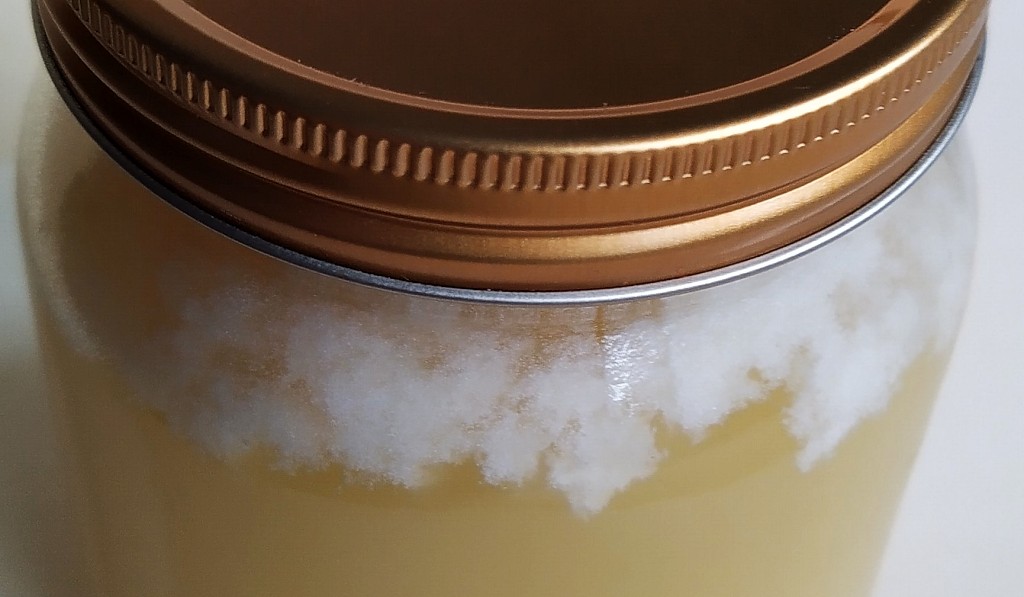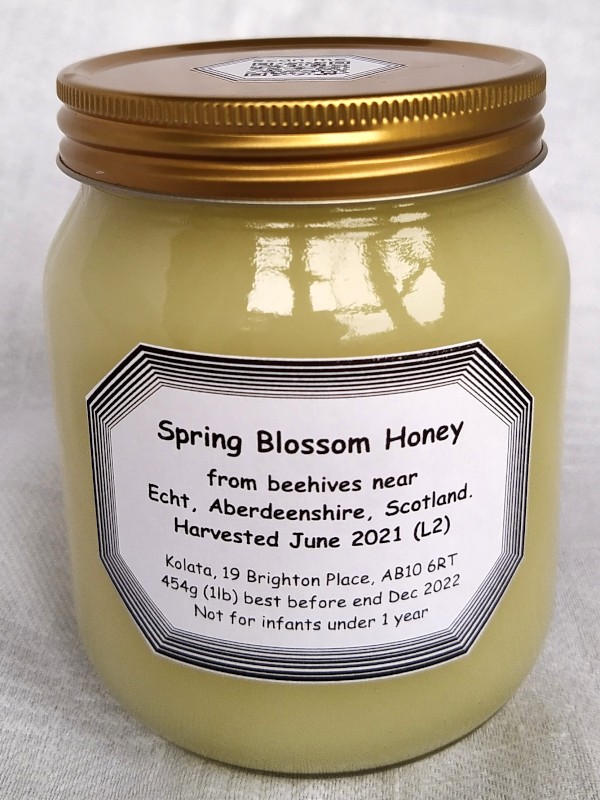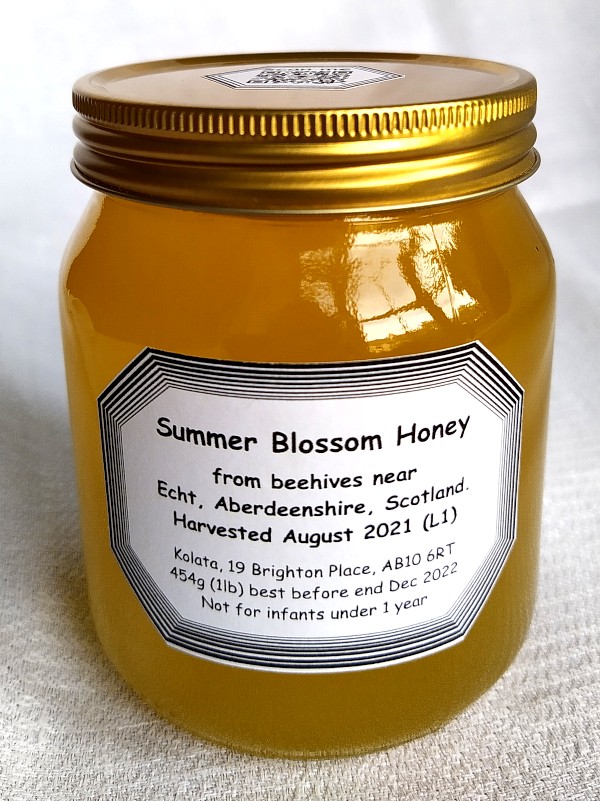
Local Aberdeenshire Honey
We keep just a handful of beehives outside of Echt Village in Aberdeenshire,
on the fringe of the Dunecht estate. This is an ideal location, because throughout
the year the bees have access to a great variety of wild flowers, flowering shrubs and trees on the estate.
In spring the bees may visit dandelion, bluebells, hawthorn, raspberry, cherry, apple, chestnut and sycamore blossoms or,
if within their 3 mile radius, a field with oilseed rape.
In summer they typically forage on clover, phacelia, brambles, rosebay willow herb, lime trees
etc and may even fly as far as the Barmekin Hill for some bell heather or ling.
Unlike many commercial beekeepers we use traditional wooden beehives
(not polystyrene) and traditional wooden frames with beeswax foundation.
We allow our bees to follow their natural swarming instinct and catch swarms rather than suppress them.

Our honey is as natural as it gets.
We don't apply heat above the natural hive environment at any stage of the extraction
nor do we filter the honey except through a pair of strainers.
Therefore all the natural goodness is maintained, including traces of pollen and beeswax.
As a consequence our honey doesn't stay runny for very long, but crystallizes fairly quickly.
This is a natural process, the speed of which is primarily governed by the type of nectar but also by
the amount of post-processing applied. Less processing means faster crystallization.

|
Sometimes the natural crystallization process is uneven, producing patches of white crystals
typically at the top of the jar.
|
This is merely a visual blemish and has no effect on taste or quality of the honey. It is only an indication that the honey was put into the jar immediately after extraction from the comb.
We sell our honey through the following shops:
-
Nature's Larder
60 Holburn Street, Aberdeen AB10 6BX -
Gourmet Cheese Co. (formerly Mellis)
201 Rosemount Place, Aberdeen AB25 2XP -
Refillosophy
12-14 Albyn Grove, Aberdeen AB10 6SQ
Once a year we also have a stall at the National Trust's
Pitmedden Garden
on their "Apple Sunday" (every year on the last Sunday in September).
Overall 2023 was a fairly good year for the bees. Our harvest was a little less than in the previous two years, which were exceptionally good, so 2023 was a more normal year. Despite the somewhat lower yield we were very pleased with the flavours we got. Not every year is the same. Our Spring Blossom Honey had a stronger, more complex flavour than usual due to the lack of oilseed rape fields nearby. Oilseed rape blossoms produce a very mild honey.
Likewise our Summer Blossom Honey had a very rich and deep flavour this year, with a lot of heather blossom in it.
It's now early December and most of our honey is already sold (or given away to friends and family). We only have a few jars left, but the shops should still have some stock. The bees are now set up for winter with plenty of stores and clustering tightly together to keep warm. And we have a rest too until the next season starts again in March 2024.

|
Spring Blossom Honey A light coloured, creamy honey with a pleasant, well balanced flavour and aroma. Almost sold out |

|
Summer Blossom Honey A rich, full flavoured honey with a distinctly floral aroma and a hint of heather. Almost sold out |
Our neighbourhood honey sale is still on until Sunday 10/12/2023. All proceeds go to local charity Aberdeen Cyrenians.
Please support your local shops!

19 Brighton Place
Aberdeen AB10 6RT
